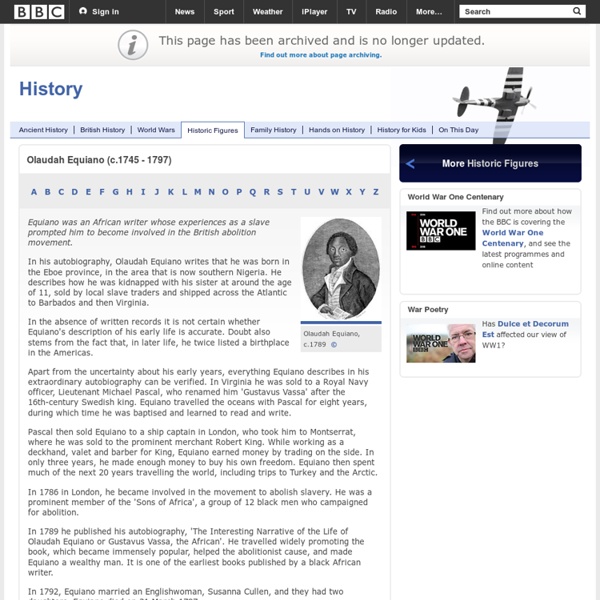



Olaudah Equiano (c.1745-1797): The Former Slave, Seaman & Writer: The Abolition of Slavery Project Olaudah Equiano, was a former enslaved African, seaman and merchant who wrote an autobiography depicting the horrors of slavery and lobbied Parliament for its abolition. In his biography, he records he was born in what is now Nigeria, kidnapped and sold into slavery as a child. He then endured the middle passage on a slave ship bound for the New World. After a short period of time in Barbados, Equiano was shipped to Virginia and put to work weeding grass and gathering stones. In 1757, he was bought by a naval captain (Captain Pascal) for about £40, who named him Gustavas Vassa. Equiano was about 12 when he first arrived in England. He served Pascal during naval campaigns in Canada and then in the Mediterranean. He came to London before returning to sea, working as an able seaman, steward and, once, as acting captain. In 1775, he travelled to the Caribbean and became involved in setting up a new plantation colony on the coast of Central America. Equiano worked hard to promote the book.
Thomas Clarkson campaigner for abolition | Revealing Histories Thomas Clarkson campaigner for abolition Leading anti-slavery activist Thomas Clarkson was a leading activist in Britain against the transatlantic slave trade. He helped found the Committee for the Abolition of the Slave Trade and was a main force in bringing about the Slave Trade Act of 1807, which legally ended British trade in enslaved Africans. Clarkson was born in Wisbech, Cambridgeshire, England in 1760. In 1785, Cambridge University held an essay competition on the subject 'Is it right to make men slaves against their wills?'. 'A direct revelation from God ordering me to devote my life to abolishing the trade'. Clarkson contacted Granville Sharp, a known anti-slavery campaigner. Evidence of inhumanity of slavery Thomas Clarkson was responsible for collecting information to support the abolition of the transatlantic slave trade. Lectures in Manchester There was clearly a not insignificant black population in Manchester and the north west at the time. Dedication to the cause
History - British History in depth: William Wilberforce: The Real Abolitionist? The Use of Petitions Opposition to the Society Thomas Clarkson talking about the famous logo History - British History in depth: The Tools of the Abolitionists History - British History in depth: The Tools of the Abolitionists
History - British History in depth: The Tools of the Abolitionists History - British History in depth: The Tools of the Abolitionists